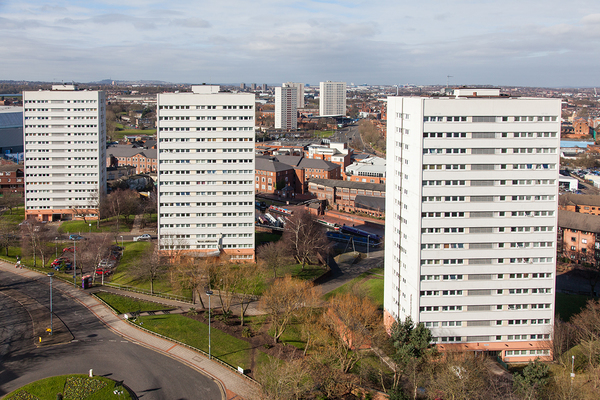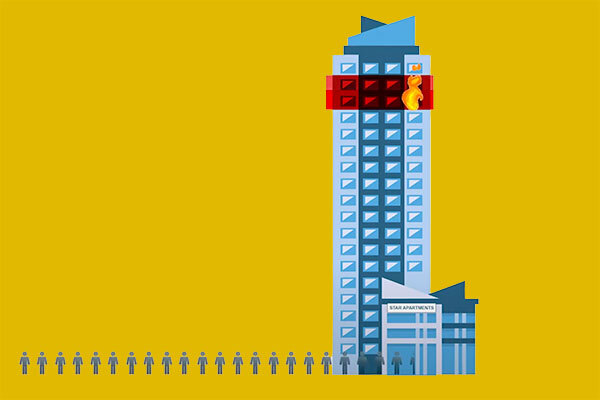What is in the government’s Building Safety Bill? Seven key takeaways
Inside Housing takes a look at the government’s draft Building Safety Bill and assesses the biggest changes for the housing sector
On Monday the government published its draft Building Safety Bill. Described by housing secretary Robert Jenrick as the “biggest improvements to building safety in nearly 40 years”, the bill contains wide-ranging changes from new, more stringent requirements on the built environment sector around building safety standards and the introduction of a new Building Safety Regulator.
Inside Housing has pored through the 334-page document to pull out some of the key changes that will affect residents, developers and landlords.
The Building Safety Regulator
One of the earliest proposals to the building safety system put forward by Dame Judith Hackitt in her post-Grenfell report on building safety was a call for a building safety regulator to be put in place. The draft bill added a lot of meat to the bones of exactly what the responsibilities of the new regulator are.
The duties of the new Building Safety Regulator are mainly two-fold: to introduce a better safety system and impose sanctions and regulations to ensure this happens. To achieve these, it will look to put in place a more stringent regulatory framework to implement a stronger focus around building safety for developers and landlords.
This will include introducing steps to improve the competence and capabilities of those working in the built environment sector, through instructing an industry-led competence committee and publishing non-statutory advice and guidance for various sectors. It will also lead on establishing and improving on standards within the building control sector, an area that has come under scrutiny following Grenfell.
In addition, the regulator will have powers to take enforcement action and impose sanctions on the corporate bodies or building control companies that do not meet regulatory standards. It will also act as the building control itself on some of the higher-risk buildings.
Dutyholders
A new dutyholder system will be implemented in every building, which aims to ensure that the person or entity that creates a building safety risk is responsible for managing that risk. The building cycle will be split into gateways – phases of the building’s life – with different dutyholders for different gateways. For example, the dutyholder for the design phase of the build will be the principle designer. For the construction phase, it will be the principal contractor.
The gateway will be assessed at each handover by the regulator, which will be allowed to step in and stop progress when it feels building safety aims are not being met. These different phases will be connected by a ‘golden thread of information’ which will include details about the original design and construction, as well as details on the changes and upgrades to the building during its lifecycle. The information will be held digitally so anybody at any stage can access it when needed.
Once the building is occupied, the dutyholder will become the accountable person. The accountable person, usually the building owner, will be responsible for the safety once people are living in a block. The accountable person will also be responsible for registering the building with the Building Safety Regulator and securing a building safety assurance certificate before it is occupied. The certificate will only be issued once the regulator is happy that the accountable person meets statutory obligations. This process will also be brought in for existing buildings.
Building safety managers
When the Building Safety Bill has been passed through parliament, the accountable persons will be required to appoint a building safety manager for every high-rise building in the country. The building safety manager’s role will be to support the accountable person in the day-to-day management of the building to ensure safety standards are adhered to.
The building safety manager will be key in communicating the work that has taken place on the building to stakeholders, ensuring the building is meeting the regulator’s requirements and being on top of any advice or non-statutory guidance put in place by the regulator.
The Building Safety Regulator has the power to veto the appointment of a building safety manager if it believes that the person does not meet the competencies required. If an accountable person fails to appoint a building safety manager without a reasonable excuse, they then run the risk of facing an unlimited fine or could be jailed for up to two years.
Increased sanctions
Under the bill, the Building Safety Regulator will be handed a number of new powers to ensure individuals and businesses adhere to the new rules. This will include powers to issue stop notices on construction projects found to be breaching regulations. The regulator will also be allowed to issue compliance notices, which will compel accountable persons to fix certain issues by a set date. Failure to comply with compliance or stop notices could result in an unlimited fine or two years in prison.
The regulator will also be able to hold badly performing building control bodies to account and ban or remove them from the inspector’s register where necessary. Another significant change is around prosecutions. Under the new rules, if a corporate body is found to have committed an offence but is regarded that it was committed with “consent or connivance” of a director, that director may also be prosecuted. The bill also increased the time limit for prosecution for contravention of building regulations from two to 10 years.
Costs to leaseholders
In the aftermath of the Grenfell Tower tragedy, leaseholders have borne the brunt of many of the costs associated with fixing fire safety problems and implementing interim fire safety measures. Inside Housing has reported on countless individual leaseholders that have faced costs of up to £85,000 to fix dangerous cladding and other building safety defects.
Under the new plan, a new “building safety charge” will be set up for leaseholders. This new charge will be separate to the service charge, which is what fire safety works are currently paid through. Freeholders will be required to hold the money from the new charge in a separate account held by a financial institution and will only be allowed to pay for works with this.
Leaseholders will also be allowed to refuse payment if the charge is deemed “unreasonable” or if the freeholder has not provided a clear breakdown of costs. However, under the new rules, leaseholders will be required to pay the fire safety charge within 28 days of when the bill was issued and will be required to cover some of the new measures brought in under the bill, such as paying for a building safety manager and the day-to-day management of the building.
New committees
Alongside the creation of a new Building Safety Regulator, there will be several new bodies set up to support its work. The first will be the Building Regulations Advisory Committee, which will be put in place to provide evidence-based guidance on new issues that emerge in the built environment sector. The regulator will be able to use the committee to investigate emerging problems or issues in the built environment sector.
There will also be a new committee for industry competence, which will be put in place to overcome the fragmented and inconsistent competence of workers and managers that currently exists in the building safety sector. The Competence Committee will inform the regulator on improvements to competence frameworks and training to ensure capabilities of the sector improve.
A new residents panel will also be put together to ensure residents have a voice in the changes being made to building safety guidance and will include residents of high-rise blocks and representative tenants groups. It is the role of the Building Safety Regulator to consult the residents panel on its strategic plan and any changes that may impinge on their rights and obligations. The regulator will also have a statutory obligation to regularly publish statements outlining how it will engage with residents in its work.
New Homes Ombudsman
The Building Safety Bill places a requirement on the housing secretary to arrange for a new system of redress to be put in place for owners of new build homes. This will take the form of the New Homes Ombudsman and allow a better mechanism for new homeowners to make complaints against developers about the quality of the construction of their new home and have them investigated.
There is currently no mechanism for new homeowners to make these complaints. It is imagined that the ombudsman will take on an enforcement role to take action against those developers found to be in breach of the New Homes Ombudsman’s code of practice.
The ombudsman will work alongside developers to come up with a code of practice that could be used in relation to sales, marketing and standard and quality of workmanship, which would allow developers and buyers to be aware of the standards expected. All developers of new homes will be required to join the scheme, with potential sanctions being imposed on those that do not. Developers will likely be legally required to advertise their membership to the scheme to prospective buyers.
Update at 15:34 23/07/20: Story initially stated that the prison sentence for individuals breaching building regulations was increased from two to 10 years. This was not correct – it was the time limit for prosecution that was extended. The story has been amended to reflect this.





